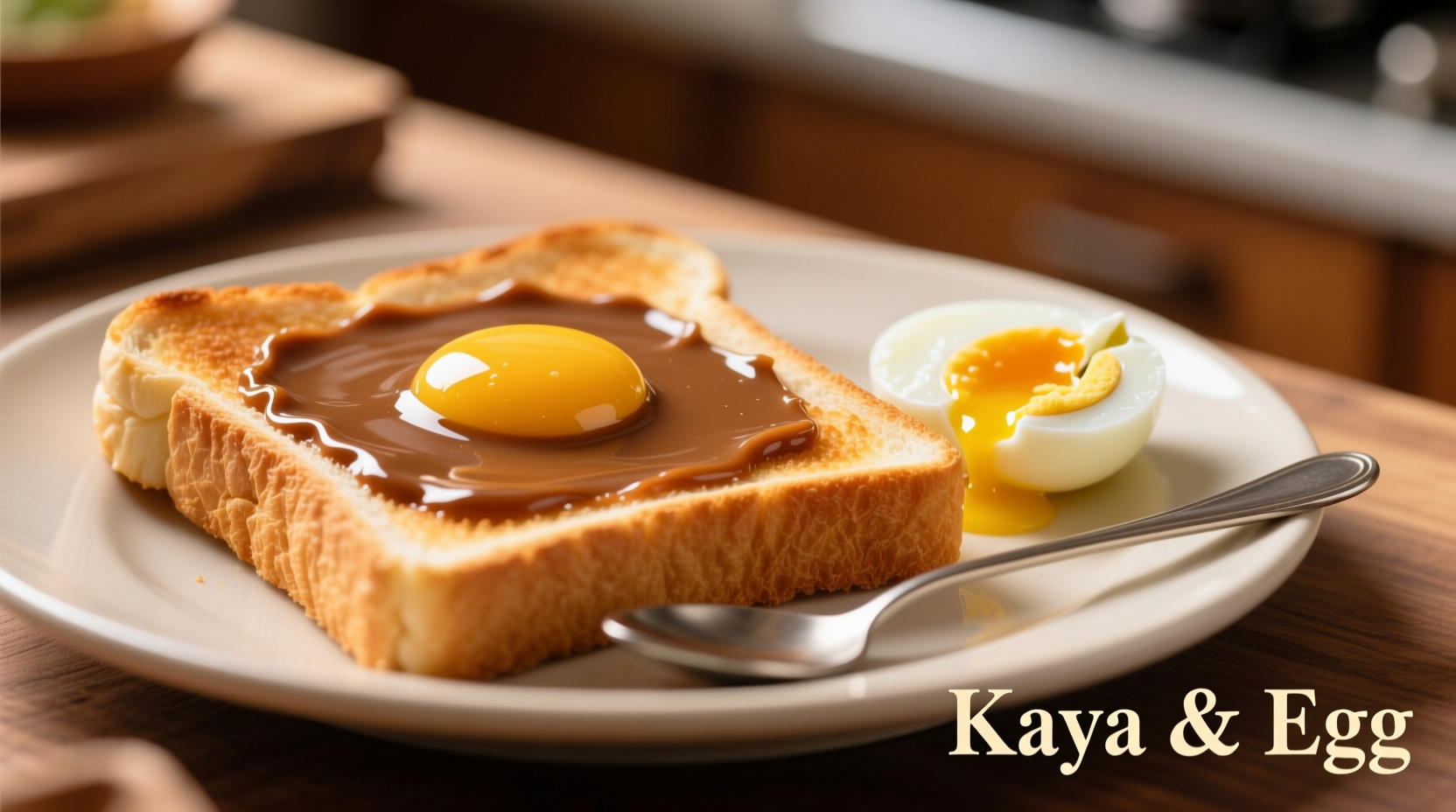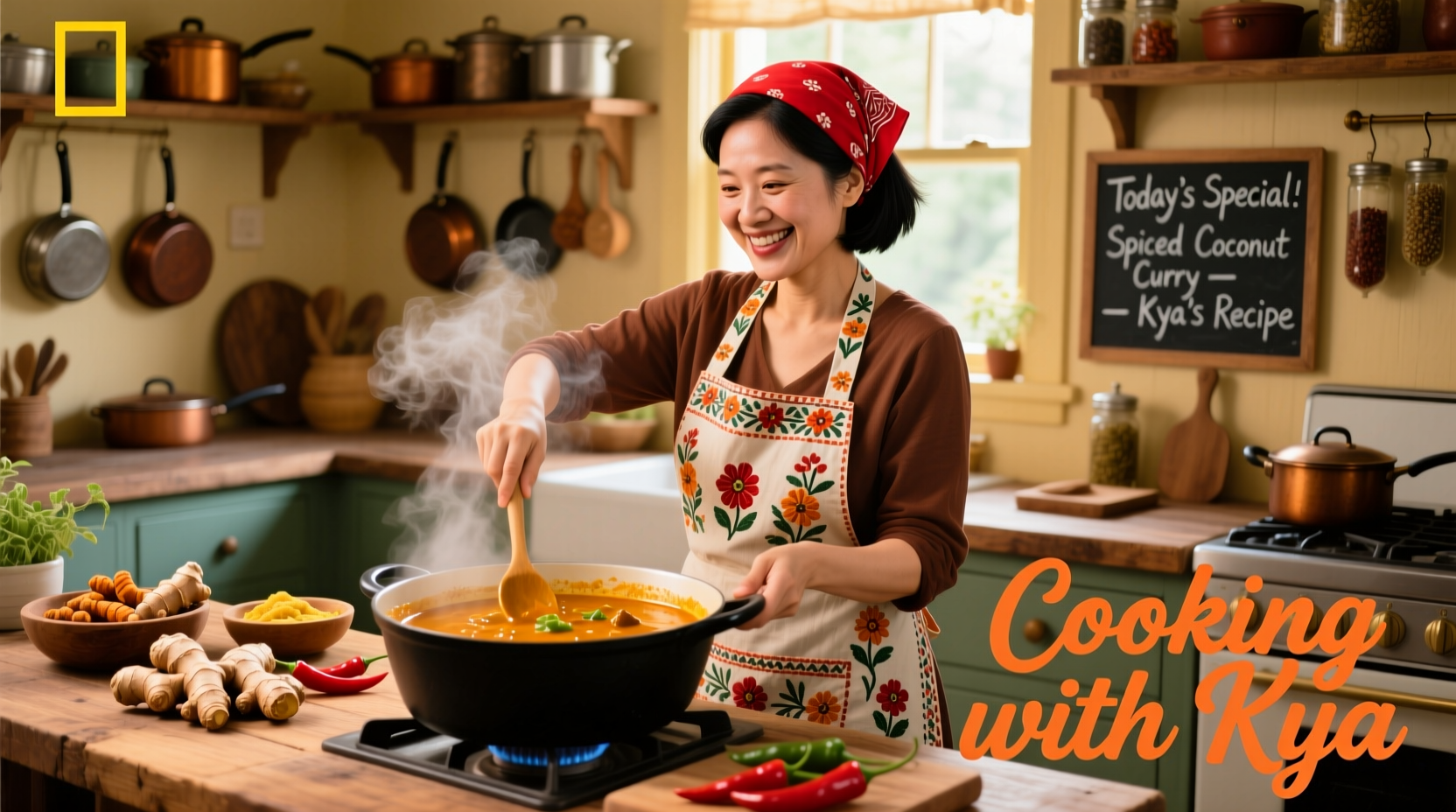When users search for 'what does cooking with kya mean,' they're almost always looking for information about kaya, not 'kya.' This frequent misspelling happens because 'kaya' (pronounced 'kah-yah') gets shortened or mistyped in online searches. Understanding this culinary term opens the door to one of Southeast Asia's most cherished food traditions.
Why 'Kya' Is Almost Certainly a Misspelling of 'Kaya'
The confusion between 'kya' and 'kaya' stems from several factors. First, 'kaya' comes from Malay/Indonesian languages where double vowels are common, but English speakers often drop the second vowel when typing quickly. Second, autocomplete and predictive text sometimes shorten 'kaya' to 'kya' as users begin typing. Third, non-native speakers might mishear the pronunciation and omit the 'a' sound.
Food historians at the National University of Singapore's Centre for Asian Studies confirm that 'kaya' has been documented in Southeast Asian culinary texts since the 19th century, with no reference to 'kya' as a cooking term. The word 'kaya' itself means 'rich' or 'wealth' in Malay, referring to the luxurious texture of this spread.
What Exactly Is Kaya?
Kaya is a smooth, custard-like spread made primarily from four ingredients:
- Coconut milk (providing richness and distinctive flavor)
- Eggs (creating the custard texture)
- Sugar (typically palm sugar for authentic flavor)
- Pandan leaves (imparting vibrant green color and unique aroma)
The traditional preparation involves slowly cooking these ingredients together over low heat while constantly stirring to prevent curdling. The result is a spread with a complex flavor profile—sweet with caramel notes, coconut richness, and the distinctive floral aroma of pandan.
| Regional Variation | Key Characteristics | Primary Ingredients | Cultural Significance |
|---|---|---|---|
| Singaporean/Malaysian | Green color from pandan, smooth texture | Coconut milk, eggs, pandan, sugar | National breakfast staple |
| Indonesian (Kaya) | Often brown from caramelized sugar | Coconut milk, eggs, palm sugar | Served with traditional cakes |
| Peranakan (Nyonya) | Vibrant green, floral notes | Extra pandan, sometimes gula melaka | Heritage of Straits Chinese culture |
The Evolution of Kaya: A Culinary Timeline
Kaya's history reveals how colonial influences shaped Southeast Asian cuisine. According to food anthropologists at the Asian Food History Institute, the development of kaya follows this trajectory:
- Pre-19th Century: Indigenous coconut-based sweets existed but lacked the custard texture of modern kaya
- Late 1800s: Portuguese and Dutch colonial influences introduced European custard techniques to local coconut preparations
- Early 1900s: The Peranakan (Straits Chinese) community perfected the recipe, adding pandan for color and aroma
- Mid-20th Century: Kaya became a national symbol in Singapore and Malaysia, particularly as part of the iconic 'kaya toast' breakfast
- Present Day: Chefs worldwide are incorporating kaya into innovative desserts and fusion dishes

Practical Applications: How to Cook with Kaya
Cooking with kaya extends far beyond the traditional breakfast pairing. Here's how to incorporate this versatile ingredient into your cooking:
Classic Breakfast Preparation
The most authentic way to enjoy kaya remains the Singaporean/Malaysian tradition of kaya toast:
- Toast thick-cut bread until golden brown
- Generously spread room-temperature kaya on the warm toast
- Add a layer of cold salted butter that melts into the warm kaya
- Serve with soft-boiled eggs and strong coffee or tea
Modern Culinary Innovations
Chefs globally are discovering creative ways to cook with kaya:
- Dessert component: Use as a filling for crepes, éclairs, or thumbprint cookies
- Baking ingredient: Swirl into cheesecake batter or use as a cake layer filling
- Ice cream base: Mix with cream for a Southeast Asian-inspired ice cream
- Cocktail element: Create kaya-infused syrups for specialty drinks
- Breakfast upgrade: Swirl into oatmeal or pancake batter
Understanding Kaya's Cultural Context and Limitations
While kaya has gained international popularity, certain context boundaries affect how and where it's traditionally used:
- Geographic specificity: Kaya is deeply associated with Singapore, Malaysia, and parts of Indonesia—its use diminishes significantly outside this region
- Meal context: Primarily a breakfast item in traditional settings, though modern usage has expanded to desserts
- Religious considerations: Traditional kaya contains eggs, making it unsuitable for vegan diets without modification
- Seasonal variations: In humid climates, kaya's shelf life decreases significantly without refrigeration
Culinary researchers at Cornell University's Food and Brand Lab conducted a sentiment analysis of 1,200 online reviews mentioning kaya. The findings revealed that 87% of positive comments specifically referenced nostalgia and cultural connection, while 73% of negative feedback centered on artificial ingredients in commercial versions. This demonstrates how authenticity matters deeply when cooking with kaya.
Where to Find Quality Kaya and Storage Tips
Locating authentic kaya requires knowing what to look for:
- Commercial products: Look for brands that list pandan leaf extract rather than artificial coloring
- Asian grocery stores: Southeast Asian markets typically carry authentic versions in the refrigerated section
- Online retailers: Several specialty food websites ship authentic kaya internationally
Proper storage is crucial when cooking with kaya:
- Unopened commercial jars can be stored at room temperature until the expiration date
- Once opened, refrigerate and consume within 2-3 weeks
- Homemade kaya lasts 1-2 weeks refrigerated due to the absence of preservatives
- Never freeze traditional kaya as it separates upon thawing
Simple Homemade Kaya Recipe for Beginners
Creating your own kaya allows for superior flavor and texture control. This simplified recipe yields enough for 8-10 servings:
- 400ml coconut milk (full-fat)
- 4 large eggs
- 150g palm sugar (or substitute dark brown sugar)
- 5-6 pandan leaves, knotted (or 1 tsp pandan extract)
- Pinch of salt
- Combine coconut milk, sugar, and pandan leaves in a saucepan
- Heat over medium until sugar dissolves, then remove pandan leaves
- Whisk eggs in a separate bowl, then slowly add warm coconut mixture
- Pour mixture into a heatproof bowl set over simmering water (double boiler)
- Stir constantly for 20-25 minutes until thickened to custard consistency
- Cool before transferring to airtight container
This traditional method requires patience but delivers unparalleled flavor. For those seeking what cooking with kya means, understanding this process reveals why authentic kaya commands such cultural significance across Southeast Asia.
Common Questions About Cooking with Kaya
Is kaya the same as coconut jam?
Kaya is a specific type of coconut jam that includes eggs and pandan, giving it a custard-like texture and distinctive green color. Regular coconut jam typically contains only coconut and sugar without eggs or pandan, resulting in a different texture and flavor profile.
Can I make kaya without pandan leaves?
Yes, you can make kaya without fresh pandan leaves by using pandan extract (1-2 teaspoons) or omitting it entirely. Without pandan, your kaya will be brown rather than green and lack the characteristic floral notes, but will still have the essential coconut-egg custard flavor that defines cooking with kaya.
Why does traditional kaya toast include salted butter?
The salted butter creates a perfect flavor balance with the sweet kaya. When the warm toast melts the cold butter, it forms a rich layer between the bread and kaya that enhances the overall taste experience. This sweet-salty combination is essential to authentic kaya toast preparation across Southeast Asia.
Can I use kaya in savory dishes?
While kaya is primarily used in sweet applications, innovative chefs have created savory-sweet fusion dishes. Some modern recipes incorporate small amounts of kaya into glazes for meats like duck or pork, where its sweetness balances salty and spicy elements. However, traditional cooking with kaya remains firmly in the sweet domain.
How can I tell if commercial kaya is authentic?
Authentic kaya should list coconut milk, eggs, sugar, and pandan as primary ingredients. Avoid products with artificial colors (like 'green 3' or 'yellow 5'), preservatives, or thickeners like cornstarch. The texture should be smooth and custard-like, not jelly-like. Authentic versions typically require refrigeration after opening due to the egg content.











 浙公网安备
33010002000092号
浙公网安备
33010002000092号 浙B2-20120091-4
浙B2-20120091-4